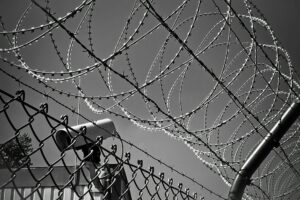For decades, institutions entrusted with the care and safety of children have too often failed in their most fundamental duty—protection. The Quamby Youth Detention Centre in Canberra was one such institution now facing renewed scrutiny as more survivors have come forward with disturbing allegations of mistreatment and abuse.
Here, we explore the youth detention centre’s troubling history, the human rights concerns raised during its operation, and the recent legal action brought against the ACT government by a former detainee.
These stories are not isolated. They form part of a broader pattern of institutional failure, one we are committed to challenging through legal action and survivor-led advocacy.
The history of Quamby Youth Detention Centre
Quamby Youth Detention Centre opened in Symonston, Canberra, in 1962 as government-run housing for children and teens on short-term remand or unable to live at home. A stay at Quamby was usually short-lived (2-4 weeks) before being transferred to a longer-term facility in New South Wales.
Quamby was a medium-to-low security centre that could accommodate up to 26 boys and girls aged 10 to 18. However, former employees have stated that the centre was too small for its purpose, and almost 40 children were housed at one point.
In 2008, Quamby was replaced by the Bimberi Youth Justice Centre and increased its capacity to 50 children and teens. In 2015, the centre was used as a temporary solution to the overcrowding at the Alexander Maconochie Centre—the local adult prison.
Human rights complaints at Quamby
In 2005, the ACT Human Rights Office completed an audit of Quamby Youth Detention Centre and found several areas of concern:
- Inappropriate mixing of detainees based on age, gender, and remand status
- Routine strip searches
- Segregation of detainees for disciplinary purposes
- Use of a seclusion room without appropriate policies and procedures in place
- Searches of correspondence and lack of privacy when making phone calls
- Inappropriate use of video surveillance (e.g. lack of mixed-gendered staff in the control room when female detainees are monitored)
- Lack of recreational facilities
- Lack of electronic database for record-keeping
- A complaints process that does not safeguard the detainees’ right to be heard before being disciplined
- Lack of consultation and information about the outcome of complaints.
In response to these concerns (specifically around excessive lockdowns and minimal time outside of cells), the ACT government announced a $40 million youth detention centre, which would become the Bimberi Youth Detention Centre.
Former inmate sues the ACT government over alleged sexual assault
In February 2025, a former detainee from Quamby Youth Detention Centre announced he was suing the ACT government, alleging a guard sexually assaulted him. The survivor claims he was raped in a chicken coop on the centre grounds.
He claims the government is liable for damages—they had a duty of care and should have taken more precautions to avoid the risk of harm to him and other detainees. He said there was no system for reporting abuse, and the centre failed to:
- Remove the guard from situations where he could abuse children
- Check the guard’s suitability to work with children
- Remove the guard from Quamby altogether.
The survivor’s lawyer said he has multiple clients alleging abuse at Quamby and Bimberi Youth Detention Centre.
“Numerous people are coming forward with stories of abuse they suffered, but also past workers with corroborating evidence of what they saw and how they were silenced when they attempted to raise their concerns with management,” he said.
The accused guard has since died, but the lawyer has stated there are allegations involving other perpetrators.
Seeking justice after institutional abuse
The history of Quamby Youth Detention Centre is a stark reminder of the harm that can occur when institutions operate without proper oversight, transparency, or accountability. The stories emerging from Quamby—and now Bimberi—aren’t just historical footnotes; they are lived experiences that continue to impact survivors today.
As institutional abuse lawyers, we stand with those who are coming forward. Seeking justice can be an overwhelming step, but no one should have to do it alone.




